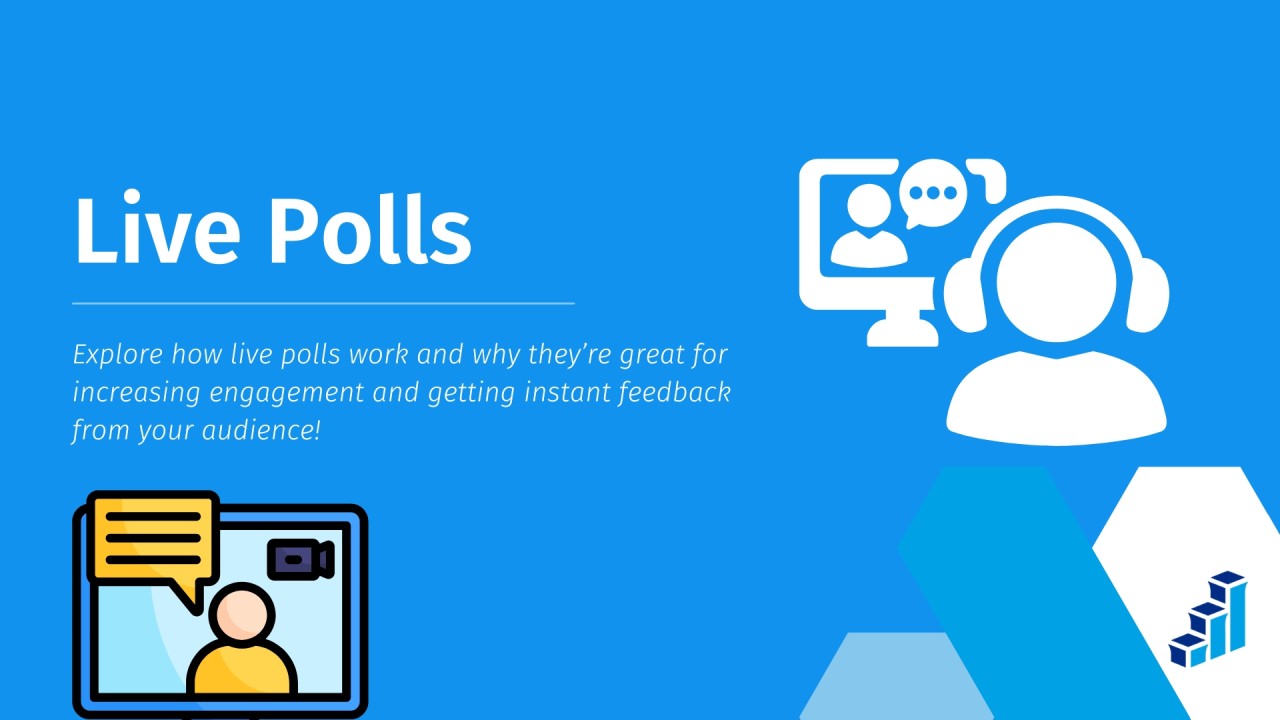
Live Polls: How They Work and Why They Matter for Engagement
In digital spaces where technology advances, live polls are essential for real-time interaction.
They are vital for real-time engagement and decision-making because they provide immediate feedback, fostering active participation and transparency.
By capturing insights instantly, live polls also ensure relevance and accuracy, making them an effective tool for collaboration and communication.
What Are Live Polls?
Live polls are real-time interactive tools to collect immediate feedback or responses.
Live polling allows participants to respond instantly and is used across industries like education, entertainment, corporate settings, etc. The list goes on!
Teachers can use live polls to gather student feedback about the current class or a course.
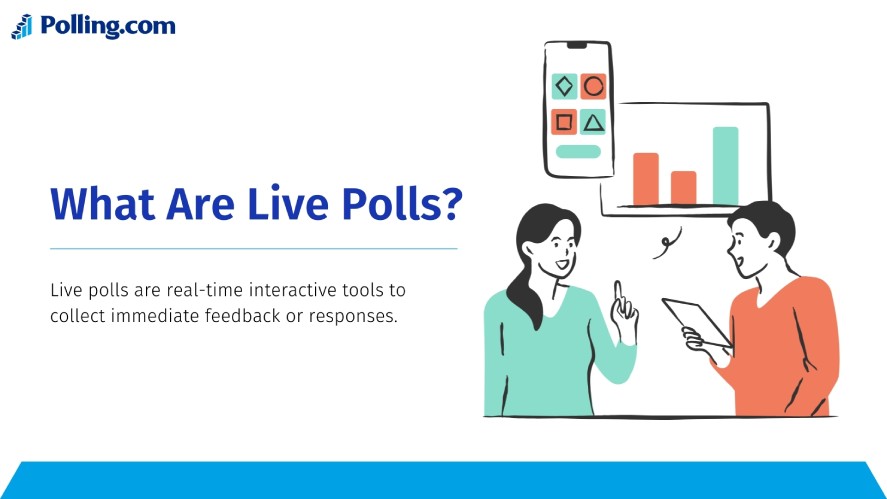
In corporate settings, live polls can assess employee opinions, gather input during meetings, or make quick decisions on project directions.
During webinars, presenters use live polls to gauge audience understanding or preferences. In live streams, creators engage viewers by letting them vote on topics or outcomes, keeping the audience actively involved.
At events, live polls help organizers make quick decisions, such as choosing the next agenda item, or they serve as icebreakers to energize the crowd.
Key Benefits of Using Live Polls
Live polls differ from traditional surveys by offering unique benefits worth considering.
First, they boost audience engagement by encouraging active participation, especially in virtual settings.
Live polls provide instant feedback, enabling you to make quick, informed decisions and adjust your approach to maintain relevance and enhance audience involvement.
Additionally, this real-time input allows you to tailor content or experiences to better align with your audience’s preferences.
Therefore, it’s live polls are so valuable in fast-paced environments where time-sensitive choices are necessary.
How to Create a Live Poll
Here are the steps on how to make a good live poll.
1. Select a Platform For The Live Polls
Although live polls can happen in real life, they are more commonly associated with digital platforms.
Live poll is a type of poll that can be created on the most popular polling platforms like:
- Polling – A powerful polling platform for getting real-time feedback and effortless insights.
- SurveyMonkey – A popular tool for creating customizable surveys and live polls with real-time feedback tracking.
- Google Forms – A free and easy-to-use tool for creating simple polls with live responses.
- Typeform – Known for interactive and visually appealing live polls and surveys.
- Slido – One of the most popular live Q&A platforms, offering live polls and Q&A integration in events and webinars.
Depending on the platform and the supported polling type, some platforms may not be able to create a live poll. However, you can still make a regular poll where responses are collected over a longer period.
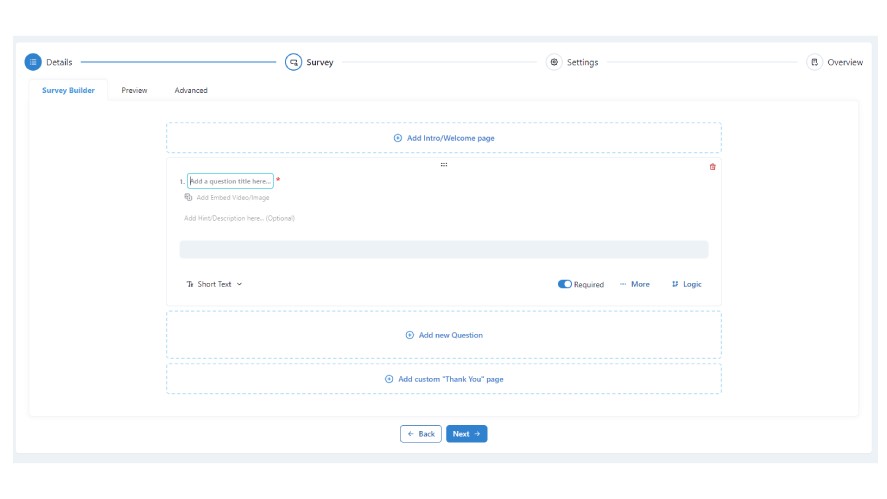
Keep in mind that the primary difference between a live poll and a normal poll is that a live poll requires real-time participation with immediate feedback, while a normal poll allows responses to be collected over a longer period without the urgency of instant interaction.
Overall, the context plays a crucial role in differentiating the two types of polls.
So, you could create a normal poll and use it in a webinar or live event. However, for it to count as a live poll, responses must still be collected in real-time during the event.
2. Define the Purpose of the Poll
Once you have decided on the platform to create the poll, you must define your poll’s goals.
What do you want to achieve when creating that poll? Do you want to gather public opinions about a certain topic, test knowledge, or engage your audience more interactively?
For instance, if your objective is to improve engagement, your poll should encourage interaction with relevant, interesting questions.
If you’re testing knowledge or seeking informed decisions, your questions should focus on factual or targeted responses.
By setting a clear purpose, you’ll be able to create a more effective poll that provides valuable insights and enhances the user experience.
3. Write Clear Questions
When creating poll questions, clarity is key to ensuring that participants understand what you’re asking and can respond effectively.
To start, keep your questions simple and concise—avoid unnecessary jargon or complex phrasing.
For example, instead of asking, “What are your thoughts on the current economic policies and their potential impact on your daily life?” try something more direct like, “How do you feel about the current economic policies?”
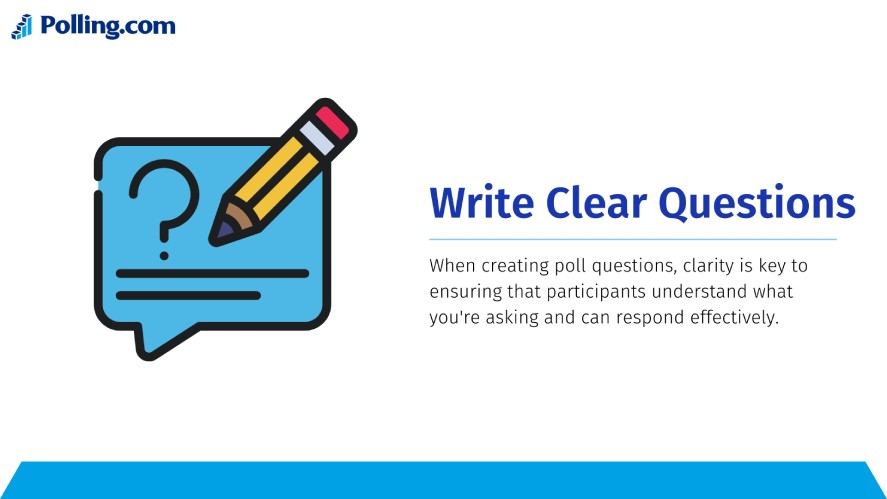
Also, be mindful of the answer options.
Keep them clear and limited to a few choices, preferably no more than five, to avoid overwhelming respondents. If using multiple-choice (like choice grids), ensure the options are mutually exclusive and cover a broad range of possible answers.
To make your questions engaging, frame them in a way that invites participation. Use positive or neutral language, and focus on topics that are relevant and interesting to your audience.
For example, instead of asking, “Do you hate these changes?” try, “How do you feel about these changes?”
Finally, test your questions before launching the poll.
Run a quick trial with a few people to ensure the questions are easy to understand and elicit the type of response you’re aiming for.
4. Share and Monitor Results
The process doesn’t end once you’ve created the poll.
During an event, whether it’s a webinar, meeting, or live stream, seamless sharing ensures that participants are engaged and can see the results as they unfold.
Instant access to live poll results encourages audience interaction and keeps them invested in the discussion, as they can instantly see how their responses align with others.
On the other hand, analyzing the results immediately after the poll closes allows you to gain actionable insights.
For example, if a poll shows that a large portion of the audience is confused about a topic, you can provide clarification on the spot.
This responsiveness not only improves the overall experience but also helps guide future decisions based on the collected data, enhancing both audience engagement and content relevance.
Read More: Best Free Poll Maker Without Response Limit: Top 5 Picks for 2024
Common Use Cases for Live Polls
Live polls play a significant role in both virtual and in-person events by actively engaging participants and sparking discussions.
In virtual settings, they allow for immediate interaction, helping to maintain audience attention and encouraging them to participate in real time.
For in-person events, polls can be used to gauge reactions or opinions on various topics, creating a dynamic atmosphere that encourages attendee involvement.
In educational settings, live polls are invaluable audience engagement tools for assessing understanding and promoting active learning.
Teachers can quickly gauge how well students grasp concepts by asking targeted questions and analyzing real-time responses.
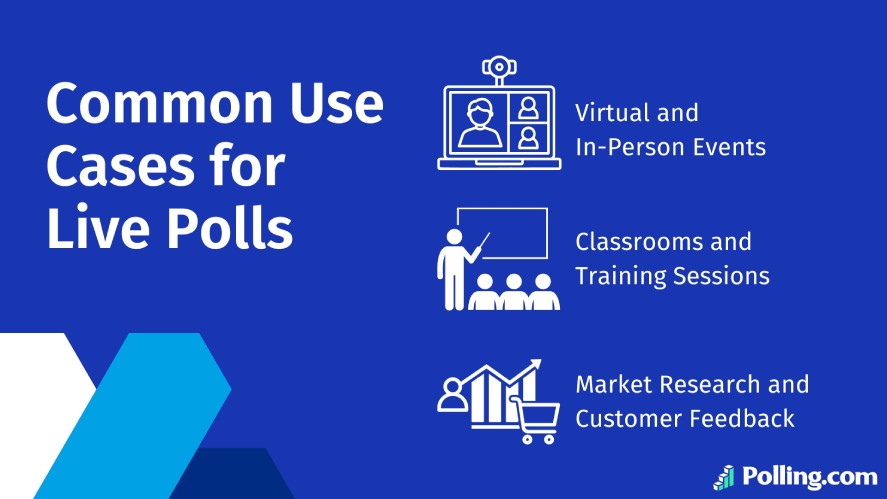
Additionally, polls encourage students to engage more deeply with the material, promoting a collaborative and interactive learning environment that supports retention and critical thinking.
Live polls are also essential in market research and customer feedback, as they provide businesses with instant insights into consumer preferences and opinions.
Companies can gauge customer satisfaction, identify areas for improvement, and even test new product ideas or services.
The rapid feedback loop from live polls allows businesses to make data-driven decisions to satisfy their target audience.
Key Features to Look for in Live Poll Tools
Creating a live poll is not an easy task.
That’s why besides following the steps we outlined above, you should also consider the following key features of a live poll tool before using it.
- Ease of Use: The tool should be simple to setup for quick deployment.
- Real-Time Analytics: This feature is a must-have as you need insights on poll results as they happen.
- Integration Options: Since live polls mostly happen in digital places, the tool compatibility with platforms like Zoom, Microsoft Teams, or live-streaming tools is a plus.
- Customization: This is an optional feature but it would be cool if the tool allow you to change the brand polls with logos, colors, or themes.
By ensuring your live poll tool includes these features, you can create a more seamless and effective experience for both organizers and participants.
Challenges and Best Practices for Using Live Polls
Using live polls comes with a few potential challenges that organizers should know.
One common issue is low participation rates, where participants may hesitate to engage, resulting in limited responses.
Another challenge is connectivity or technical issues, which can disrupt live events and lead to delays or incomplete data. This can happen if participants experience connection problems or if the platform malfunctions during the polling process.
To overcome these challenges, it’s important to use fun surveys with engaging, open-ended questions that spark interest, motivating participants to actively respond.
Sharing poll results transparently with the audience in real time also boosts trust and keeps everyone engaged, as it shows that their input matters.
Additionally, promoting the poll in advance through emails, social media, or event announcements ensures that participants are aware of it ahead of time and are more likely to engage, maximizing the overall participation rate.
Conclusion
In conclusion, live polls are dynamic tools that allow for real-time interaction and immediate feedback.
Whether used in virtual events, classrooms, market research, or customer feedback, the benefits of live polls are clear: they foster engagement, offer instant insights, and enable timely adjustments to improve outcomes.
Their versatility across industries highlights the importance of staying connected to your audience and adapting quickly to their needs.
So, we encourage you to explore the various live poll tools available and implement strategies that will help you leverage their full potential to drive more meaningful interactions and data-driven decisions.
